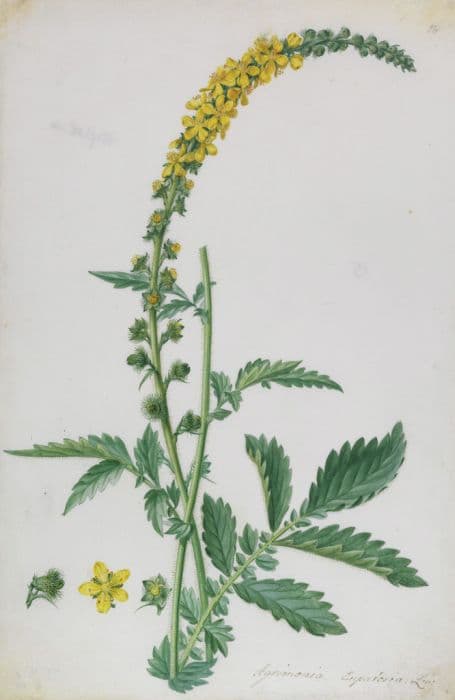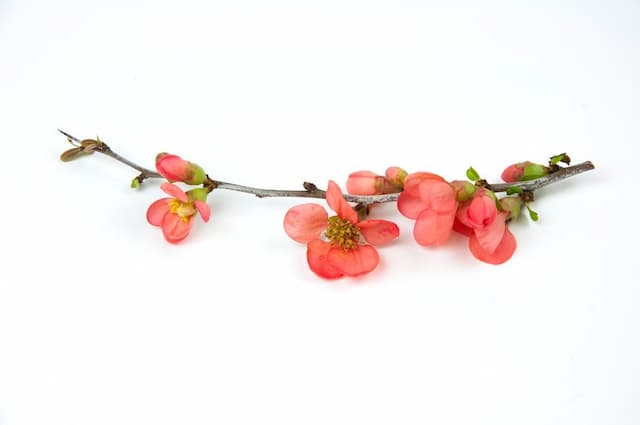Lady's Mantle Alchemilla mollis

ABOUT
Alchemilla mollis, commonly known as lady's mantle, is a perennial plant that is well-known for its distinctive and attractive foliage. The leaves of lady's mantle are circular, with a soft, almost velvety texture and a rich, deep green color. The edges of the leaves are uniquely scalloped, giving them a frilly appearance that somewhat resembles the ruffled skirts of old-fashioned dresses. The surface of the leaves has a special quality; it is covered with tiny hairs that can capture water droplets, creating a beautiful, sparkling effect when adorned with dew or after a light rain. This feature makes the foliage of lady's mantle particularly eye-catching in garden settings. In addition to its lush leaves, lady's mantle produces sprays of tiny, star-shaped flowers. These blossoms are a subtle shade of yellow-green and form loose clusters that hover above the foliage like a misty, chartreuse cloud. The flowers are held aloft on slender, branching stems that arise from the main clump of the plant. The overall effect of the plant, with its combination of textured foliage and delicate flowering sprays, lends a whimsical and soft character to any garden space where it is planted. Lady's mantle is also valued for the ease with which it can be integrated into a variety of garden designs, from borders to rockeries, and for its use in floral arrangements.
About this plant
 Names
NamesFamily
Rosaceae.
Synonyms
Lady's Mantle, Lion's Foot, Bear's Foot, Nine Hooks, Dewcup.
Common names
Alchemilla acutangula, Alchemilla alpestris, Alchemilla ambigua, Alchemilla argyrophylla, Alchemilla carpatica, Alchemilla caucasica, Alchemilla conjuncta, Alchemilla coriacea, Alchemilla elata, Alchemilla elliptica, Alchemilla erythropoda, Alchemilla fissa, Alchemilla flabellata, Alchemilla glaucescens, Alchemilla glomerulans, Alchemilla grandis, Alchemilla hoppeana, Alchemilla hybrida, Alchemilla mollis, Alchemilla monticola, Alchemilla montis-noricae, Alchemilla plicata, Alchemilla repens, Alchemilla splendens, Alchemilla subcrenata, Alchemilla vulgaris, Alchemilla xanthochlora.
 Toxicity
ToxicityTo humans
Lady's Mantle is not known to be toxic to humans. Therefore, no symptoms of poisoning are expected upon ingesting parts of this plant.
To pets
Lady's Mantle is not known to be toxic to pets either. Thus, ingestion of this plant typically should not cause any symptoms of poisoning in animals such as cats or dogs.
 Characteristics
CharacteristicsLife cycle
Perennials
Foliage type
Deciduous
Color of leaves
Green
Flower color
Yellow-green
Height
1-2 feet (30-60 cm)
Spread
1-2 feet (30-60 cm)
Plant type
Herb
Hardiness zones
3-8
Native area
Europe
Benefits
 General Benefits
General Benefits- Ground cover: Lady's mantle forms a dense mat that suppresses weeds and covers barren patches in the garden.
- Ornamental value: The fan-shaped, softly hairy leaves and chartreuse flowers create a visually appealing foliage and texture.
- Low maintenance: This plant is fairly easy to grow, requiring minimal care once established and it is tolerant of a range of soil conditions.
- Drought resistance: Once established, lady's mantle can tolerate periods of dry weather, making it a good choice for gardeners in dry climates or those looking to conserve water.
- Attracts wildlife: The flowers of Alchemilla mollis attract beneficial insects such as bees, which are important for garden pollination.
- Easy propagation: Lady's mantle can easily be propagated by dividing the clumps, allowing gardeners to spread the plant around or share with others.
- Seasonal interest: Provides aesthetic interest from spring to fall, with its foliage and blooms changing throughout the seasons.
 Medical Properties
Medical Properties- Anti-diarrheal: Alchemilla mollis has been used traditionally to help reduce diarrhea.
- Menstrual aid: It may help in regulating menstrual flow and relieving cramps.
- Astringent: The plant has astringent properties that can help in wound healing and reducing inflammation.
- Gastrointestinal relief: It has been used to alleviate gastrointestinal discomfort and as a remedy for certain digestive disorders.
 Air-purifying Qualities
Air-purifying QualitiesThis plant is not specifically known for air purifying qualities.
 Other Uses
Other Uses- Alchemilla mollis, commonly known as Lady's Mantle, has leaves that are often used to add a unique shape and texture to floral arrangements.
- The plant's ability to retain dewdrops on its leaves has been used as an aesthetic feature in gardens and landscapes, adding a sparkling effect during the early hours of the morning.
- The low-growing habit and scalloped foliage of Lady's Mantle make it an excellent ground cover or edge plant in garden beds and borders.
- Lady's Mantle can be used as a natural dye plant, yielding a light green color when used on wool or other natural fibers.
- In arts and crafts, the intricate leaf pattern of Lady's Mantle can be used to create botanical prints or nature-inspired designs.
- As a companion plant, Lady's Mantle can help to deter certain pests due to its strong scent when planted alongside vegetables or flowers.
- The plant has been utilized in rain gardens due to its tolerance for wet conditions, where it helps to manage water runoff and soil erosion.
- Lady's Mantle is sometimes used in culinary presentations as a decorative, non-toxic garnish for plates and platters.
- Gardeners use the dense foliage of Lady's Mantle to suppress weeds, due to its spreading nature and large leaf spread.
- Lady's Mantle is chosen for use in fairy and miniature gardens because of its enchanting appearance and manageable size, which suits the whimsical aesthetic of these garden styles.
Interesting Facts
 Feng Shui
Feng ShuiLady's Mantle is not used in Feng Shui practice.
 Zodiac Sign Compitability
Zodiac Sign CompitabilityLady's Mantle is not used in astrology practice.
 Plant Symbolism
Plant Symbolism- Magic - Alchemilla mollis, commonly known as Lady's Mantle, is often associated with magic and alchemy due to its unique ability to collect dewdrops on its leaves, which was thought by alchemists to be the purest form of water and a key component in the transformation of substances.
- Femininity - Lady's Mantle is symbolic of femininity and womanhood, not only because of its common name but also because its serrated leaf edges are reminiscent of the scalloped edges of traditional women's garments.
- Protection - The plant’s leaves, which have a soft and enveloping shape, are considered symbols of protection and are believed to safeguard against negative influences.
- Healing - Due to its historical use in herbal medicine to treat various ailments, Lady's Mantle is also symbolic of healing and the nurturing aspect of nature.
 Water
WaterLady's Mantle should be watered deeply until the water runs through the drainage holes, then allowed to dry out slightly between waterings. On average, watering should be done once a week, providing about one to two gallons depending on the size of the plant and environmental conditions. During hot summer months or if planted in a container, Lady's Mantle may require more frequent watering. It's important to avoid overhead watering to prevent leaf diseases; instead, water at the base of the plant. During the winter or in cooler climates, reduce watering frequency to prevent root rot.
 Light
LightLady's Mantle thrives in partial shade to full sun, with dappled sunlight being ideal. It prefers a spot that is shielded from the hot afternoon sun, especially in warmer climates. An east or north-facing garden spot that receives morning light and afternoon shade is perfect for maintaining the vibrant green foliage and promoting healthy growth.
 Temperature
TemperatureLady's Mantle does well in a range of temperatures and is cold hardy in USDA zones 3 to 8. It can survive minimum temperatures as low as -40°F and can tolerate up to the mid-80s°F during the growing season. The ideal temperature range for this plant is between 60°F and 75°F, a climate that encourages robust growth and flowering.
 Pruning
PruningPruning Lady's Mantle involves cutting back the spent flower stems after blooming to encourage a second flush of growth and maintain a tidy appearance. It's best to prune in late summer or early fall once the flowering has ceased. Deadheading, or the removal of faded flowers, can be done throughout the growing season as needed. Occasionally, older leaves may need to be removed to keep the plant looking fresh.
 Cleaning
CleaningAs needed
 Soil
SoilLady's Mantle thrives in well-draining soil rich in organic matter with a pH ranging from 5.6 to 7.5. A mix of two parts garden soil, one part peat, and one part perlite or sand would provide a favorable environment for its growth.
 Repotting
RepottingLady's Mantle does not require frequent repotting and can be done every 2-3 years or when it outgrows its current container, ideally in the spring.
 Humidity & Misting
Humidity & MistingLady's Mantle prefers moderate humidity levels but is adaptable to the typical humidity found in most homes and gardens, without needing any special measures.
 Suitable locations
Suitable locationsIndoor
Ensure bright, indirect light and room temperature.
Outdoor
Choose partial shade and sheltered spot.
Hardiness zone
3-8 USDA.
 Life cycle
Life cycleAlchemilla mollis, commonly known as Lady's Mantle, begins its life cycle as a seed, typically germinating in early spring when temperatures are cool and moisture is plentiful. The seedling develops into a rosette of rounded, lobed leaves, and as the root system establishes, it becomes a perennial clump-forming herb. During late spring to early summer, the plant matures and sends up flowering stems bearing small, chartreuse-yellow flowers that are attractive to pollinators. After pollination, these flowers turn into small fruits, each containing a seed that can disperse to form new plants. Lady's Mantle is a hardy plant that can survive winter in a dormant state and regrow from the same rootstock the following spring. Throughout its life, Alchemilla mollis can also spread vegetatively by producing offsets, leading to dense groundcover formations over time.
 Propogation
PropogationPropogation time
Spring-early summer
Propogation: The most popular method for propagating Lady's Mantle (Alchemilla mollis) is through division. The best time for this is generally in the spring or early fall when the plant is not in active flower. To carry out division, dig up an established clump of Lady's Mantle and carefully separate it into smaller sections. Each section should have a healthy portion of roots and several shoots. Replant the divisions at the same depth they were growing at originally, spacing them around 12 to 15 inches apart (approximately 30 to 38 centimeters). Water the newly planted divisions thoroughly to help establish them. This method of propagation ensures a true copy of the parent plant is produced and the divisions will typically grow quickly to establish new, robust plants.









